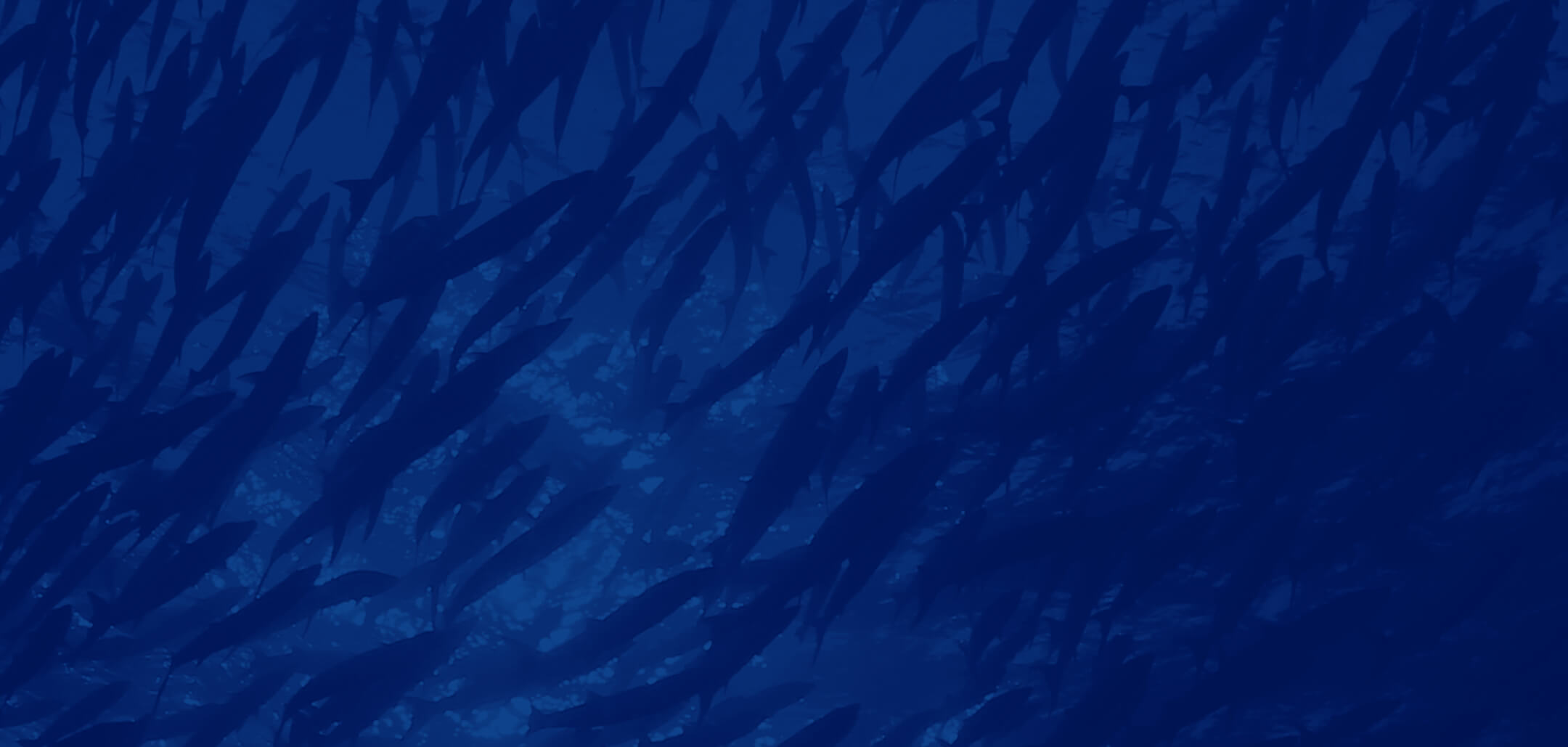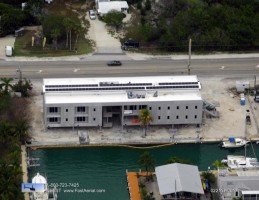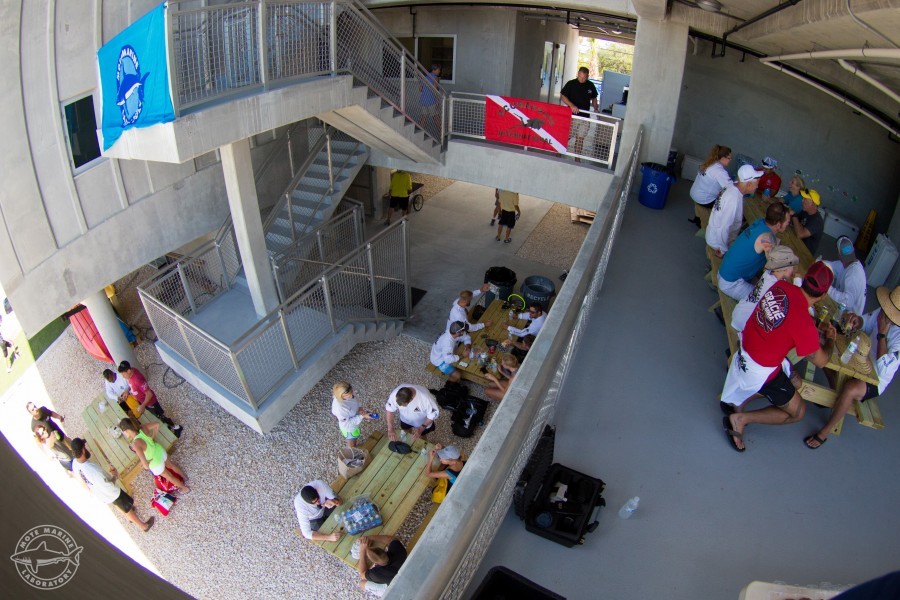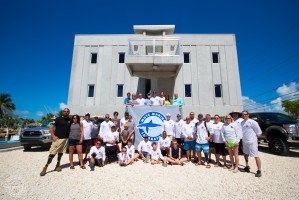Media contacts
Mote Marine Lab:
Hayley Rutger
941-374-0081
hrutger@mote.org
Willis A. Smith Construction, Inc.
Peggy Kronus
941-366-3116, ext. 316
pkronus@willissmith.com
Two Trails Inc. – Sustainable Building Consulting
Tom Rupp
941-776-8680
contact@twotrails.com
TwoTrails.com
—
Mote Marine Laboratory’s coral reef research facility in the Florida Keys has become the first U.S. Green Building Council LEED Gold Commercial certified building in Monroe County, honoring its outstanding, eco-friendly design and construction.
Mote’s Elizabeth Moore International Center for Coral Reef Research & Restoration (IC2R3), which opened in May 2017, is advancing Mote’s critical mission: marine research supporting conservation and sustainable use of natural resources. IC2R3, the newest facility among Mote’s five Florida campuses, works to address the grand challenges facing Earth’s “underwater rainforests”: coral reefs.
Dovetailing with that mission, LEED — Leadership in Energy and Environmental Design — is the world’s most widespread rating system for green buildings, according to the U.S. Green Building Council (USGBC).
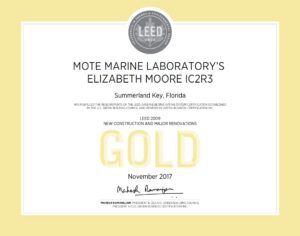
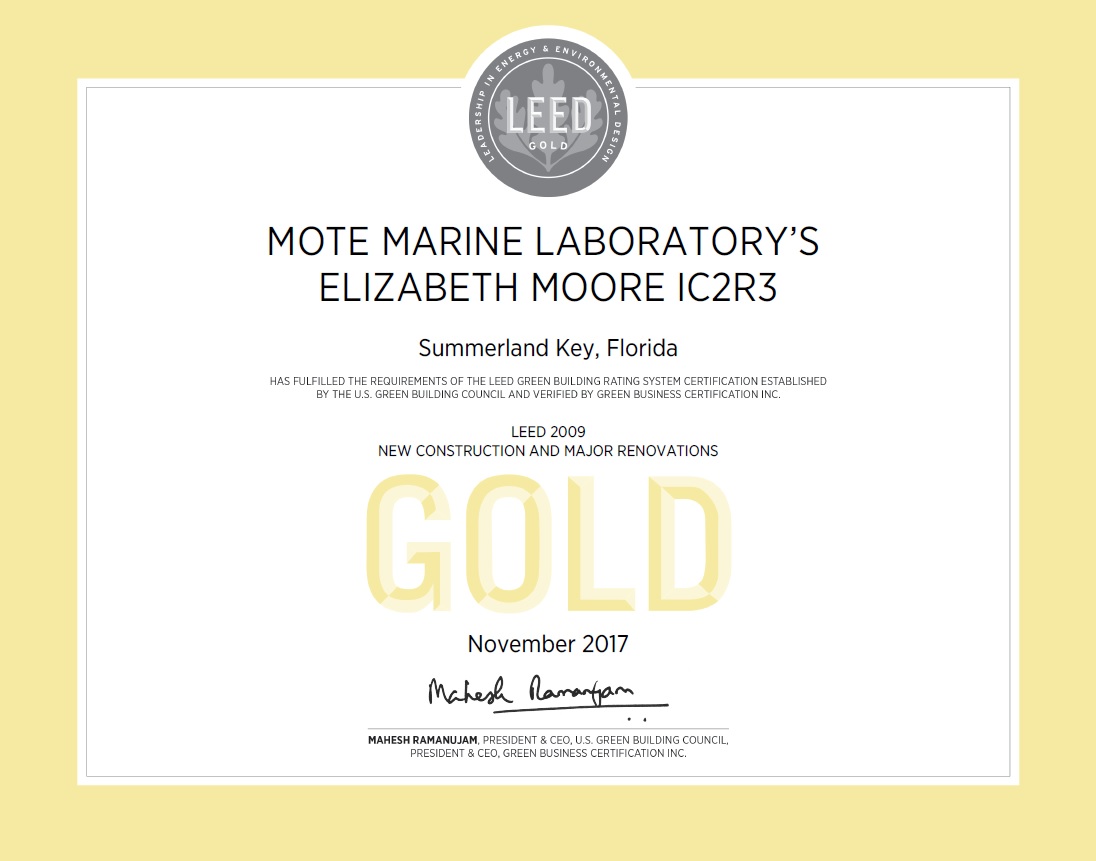
“We planned for this facility to embody our ocean-friendly, planet-friendly mission — that was our vision from day one,” said Mote President & CEO Dr. Michael P. Crosby. “Now, as scientists and students from around the globe collaborate at this cutting-edge base of operations, they can take pride not only in what we achieve together, but also how we achieve it — with great care for minimizing our environmental footprint.”
IC2R3 replaced older facilities at Mote’s Summerland Key campus, more than doubling its research space. There, Mote scientists raise and study more than 20 species of hard corals and maintain a broodstock reserve facility to produce thousands of coral fragments for reef restoration and for studies of coral resilience amid the warmer, more acidic oceans expected in Earth’s future. IC2R3 also serves hundreds of other scientists from more than 60 different institutions worldwide who are working to restore and protect reefs.
With Mote’s specifications in mind, Willis A. Smith Construction, Inc., built IC2R3 to include 30.1 kilowatt solar panels, a rainwater capture system, significant proportions of recycled and local building materials, and other eco-friendly features. The facility offers scientists and students eight residential suites, five offices, two wet labs and one prep lab on the second floor, three dry labs, one prep lab and one ocean acidification lab on the third floor, two electric car charging stations, two indoor classrooms and one outdoor classroom.
“Willis Smith Construction’s goal was always to strive for USGBC LEED Gold certification for Mote’s new coral research facility,” said John LaCivita, Vice President at Willis Smith Construction. “With that in mind, even before we started putting ink to paper, we reviewed every line item on the LEED checklist and determined what would be possible in the Keys. Keeping those specific target items in mind, we then began the design collaboration. It worked!”
The LEED Gold facility houses the Alfred Goldstein Institute for Climate Change Studies and offers scientists access to new seawater systems, raceways and experimental tanks for studying multiple reef species facing climate change impacts such as rising ocean temperatures and ocean acidification; molecular equipment to process and prepare samples for next generation sequencing and genomic analyses — for example, to find the best genetic strains of corals for reef restoration; microbial supplies for studying microscopic life forms that can help or harm coral reefs; a carbonate chemistry lab for ocean acidification research; and more.
This year, Two Trails Inc. – Sustainable Building Consulting assessed IC2R3 for LEED Commercial certification. They documented these key features:
- Improvement of 37.9 percent energy efficiency from baseline, calculated using the American Society of Heating, Refrigerating and Air-Conditioning Engineers’ 90.1-2009 code. This model assessed the improved energy efficiency of Mote’s facility versus a comparable facility without the same energy efficient LEED features and solar power production.
- 17.6 percent of total energy consumed at the facility is generated on-site from the rooftop solar photovoltaic installation.
- Water use reduced 46.11 percent from baseline.
- Captured rainwater is collected in a 1,050-gallon cistern and reduces potable water use for sewage conveyance by 166 percent.
- 100 percent of landscaping consists of plants native to the Florida Keys and is xeriscaped with no irrigation required after establishment.
- Sunlight is reflected (including unwanted heat) by 99 percent of compliant non-roof surfaces and 100 percent of compliant roof surfaces. The goal is to reduce the “heat island” effect of development on microclimates and human and wildlife habitats.
- 80.74 percent of the facility’s construction waste was recycled or re-used, diverting it from landfill.
- 22.36 percent of the total building materials’ content was manufactured using recycled materials.
- 53.08 percent of the total building materials’ value includes materials and products manufactured and extracted within 500 miles of the project site.
“To Mote Marine Laboratory, Willis Smith Construction and to all those involved on the project team, we salute you — the dedication to sustainable design and development embodied in this project is something we all should be very proud of,” said Josh Kane, LEED & NGBS Project Manager for Two Trails Inc. – Sustainable Building Consulting.
IC2R3’s construction, outfitting and scientific infrastructure value about $7 million total. All support to-date has come from philanthropic giving. The following supporters have made major contributions toward Mote’s IC2R3 facility and its mission:
- The Gardener Foundation, the Founding Donor
- Elizabeth Moore, Leadership Donor and building namesake
- The Rick and Nancy Moskovitz Foundation
- Alfred and Ann Goldstein Foundation
- Charles and Margery Barancik Foundation.
- Jane’s Trust Foundation
- Dart Foundation
These incredible supporters and countless other community members have helped make IC2R3 a stronghold of hope for coral reefs’ survival and recovery. Beyond USGBC LEED Gold certification, the building is Category-5 hurricane resistant, which allowed it to shelter Mote’s coral gene bank during Hurricane Irma.
“This sustainable facility will serve our mission for decades — saving resources and energy costs for the lifetime of the building,” said Mote’s Vice President of Facilities, Derek Templeton. “It certainly is a lab for the future.”

